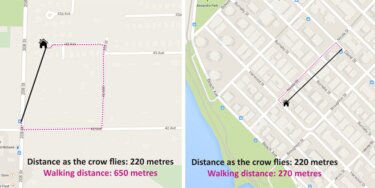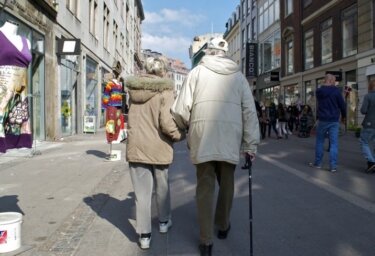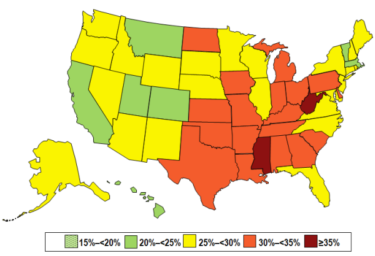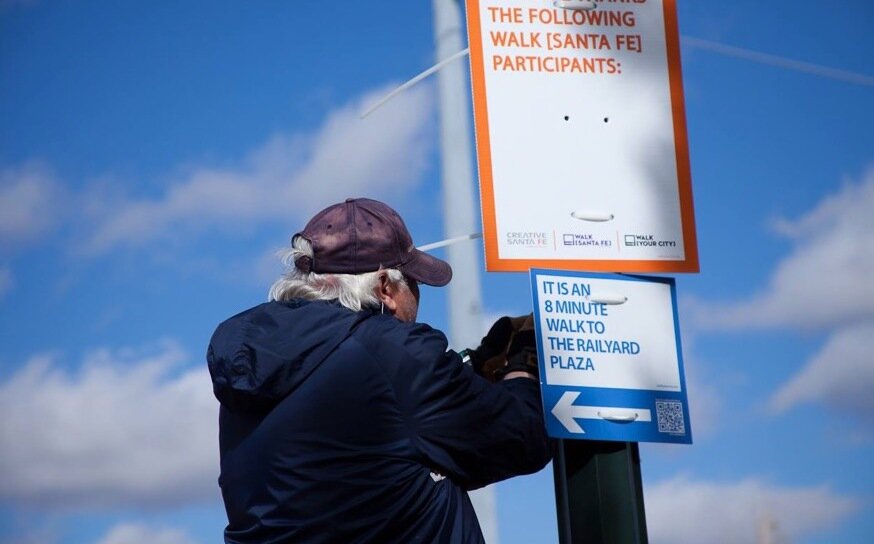"Walkability is both an end and a means, as well as a measure… After several decades spent redesigning pieces of cities, trying to make them more livable, and more successful, I have watched my focus narrow to this topic as the one issue that seems to both influence and embody most of the others. Get walkability right and so much of the rest will follow."
The Doable City Reader
There is so much that can be done to make our cities happier, healthier and more prosperous places. Every day in cities around the world, citizens and city planners alike are showing us how small actions can scale up to have massive impact. And they can in your city too.
That’s what the Doable City Reader is about. In June 2014, 8 80 Cities, in collaboration with the Knight Foundation, brought 200 civic innovators from around North America together in Chicago at the Doable City Forum to share and discover methods for rapid change making. The Doable City Reader is inspired by the rich conversations amongst presenters and participants at that forum. It is a resource for any and all people who want to make change in their cities and is meant to educate, inspire and empower anyone to do so.
The healthiest, wealthiest, most sustainable and most vibrant communities in cities around the world are unique in many ways. But there is one factor above all others that these communities have in common: they are, nearly without fail, highly walkable places.
There is good reason for this. Every day, every one of us is a pedestrian. No matter where we are going or how we choose to get there, every journey begins and ends with a walk. But by creating places that are built for walking, we flick a switch that unlocks the best our cities can offer us and creates communities that are healthier and richer in every way.
What is walkability?
Simply put, a walkable community is one where residents can reach a wide range of amenities — grocery stores, doctor’s offices, restaurants, drug stores, parks and schools, safely and easily by foot. It is also, importantly, a place where the built environment — the collection of streets and buildings and public spaces that make up the city’s landscape — encourages them to do so.
The built environment can do this in many ways, and there are various guidelines for what walkable design means. You’ll see some of these discussed below. But Jeff Speck, author of Walkable City: How Downtown Can Save America, One Step at a Time boiled it down to the simplest principles when he wrote that a walkable place is one where a walk is four things: useful, safe, comfortable, and interesting. That means that walkability is about more than just building sidewalks so that people can walk (although, yes, sidewalks are important too!), it’s also about creating places where people want to walk.
For centuries, when our feet were our main form of transportation, cities were naturally walkable places. However, for the past several decades our cities have instead been built around and for the automobile and the vast distances it can travel in a short amount of time (at least in theory — in reality today, they are likely stuck in traffic!) Now, cities have spread to the point that most day-to-day destinations are too far, too disconnected and too unpleasant for us to traverse them on foot. Walkability is about intentionally rethinking how we are designing our communities to put the pedestrian first.
There is no single recipe to create communities that are more walkable. There are, however, a few key common attributes. Some of the basics include:


- A fine-grained network of well-connected streets. Where block sizes are big or where the street network is made up of discontinuous cul-de-sacs, as seen to the right, it often takes too long and is just too inconvenient to walk anywhere on a regular basis.
- People-friendly urban design, which includes safe, comfortable, direct and attractive walking routes separated from motor vehicle traffic. In addition to the quality of the walking infrastructure itself — sidewalks that are even, continuous and sufficiently wide — the surrounding street environment plays a major role in encouraging or discouraging walking. Things such as shade and weather protection, good lighting, benches, bus shelters, street trees and public art make the street more attractive for walking. Streets lined with many doors and windows, as opposed to long, blank façades, keep the walk interesting and engaging. This encourages people to walk further. They also provide “eyes on the street,” as they were dubbed by famous urbanist Jane Jacobs; people looking out their storefronts or front windows can keep an informal eye on the neighbourhood and deter criminal activity.
- A rich diversity of amenities, such as groceries, childcare, libraries, gyms, dry cleaning and restaurants, located within close proximity to each other, along with high employment and population density. The more people and jobs that are located closely together — especially in neighbourhoods with that rich mix of amenities — the more destinations will be within walking distance for more people.
- Good cycling and transit connections. Walking, cycling and transit are mutually supportive modes of transportation that need to work together to create more walkable communities. These modes help to extend the reach of people on foot and reduce the need to drive. (See the Networks chapter for much more on this.)
There are plenty of examples of neighbourhoods with some, but not enough of, the elements of walkability to make them truly walkable.
For example, a neighbourhood might have wide tree-lined sidewalks and attractive parks that make for pleasant walking. If there is no mix of shops and services nearby, however, there is nothing of note for people to walk to outside of taking recreational strolls. A great example of this is Laguna West, a master-planned New Urbanist community in California. As you can see and explore in the map below, Laguna West was built with slow streets and wide sidewalks intended to encourage walking. (See the original New York Times description of the community here). However, it was originally built to be serviced by light rail into Sacramento. When that investment didn’t come through, Laguna West was rendered, in the words of famous urbanist Sir Peter Hall, “as completely power-dependent as any track suburb you could find.”
Likewise, a higher-density neighbourhood of townhouses or towers might be located right next to a major regional mall with plenty of shops and services. However, if the street network is not well-connected, distances may still be too great for most people. If that mall is on a busy road with narrow sidewalks and surrounded by large-surface parking lots, most people will find it unpleasant or unsafe to walk, even if they do live nearby. A great example is this tower development directly next to Square One Mall in Mississauga, Ont., below. (Towers can be seen on the east and south side of the mall, as well as the north, across the highway, made more visible by their long shadows.)
Ultimately, there is no one magic bullet or secret ingredient to creating more walkable communities. Instead, all of these ingredients need to work together.
"Get it right, and the rest will follow"

It’s no secret that many of our cities are facing major environmental and social problems. Especially in North America, diseases of inactivity like obesity and diabetes have reached crisis proportions; municipalities are going bankrupt; housing markets have crashed; we continue to pollute our air and are already feeling the dire effects of climate change; and we’re more disconnected from our neighbours and communities than ever before. While all of these problems are complex, many of them stem quite directly from the way our cities have been built and how they are shaping our lives. By building more walkable communities, we actually tackle many of these problems all at once, while creating vibrant and beautiful places to live.
HEALTH
Low impact, appropriate for all ages and free of charge, walking is a particularly accessible form of physical activity. Walking one mile in 20 minutes burns about the same number of calories as running one mile in 10 minutes and has been shown to significantly reduce the risk of becoming overweight or obese.
And when it comes to all other elements of our health, walking is a wonder drug. While the typically recommended daily dose is a minimum of 10,000 steps, or about 30 minutes, benefits can be seen well below this limit. Studies have found that moderate amounts of walking lead to a significant reduction in heart disease, cancer, lung disease, diabetes and pain from arthritis. It reduces stress, anxiety and depression and improves sleep, creativity, memory and cognitive performance for children as well as older adults.
The problem is that we just don’t do it enough anymore. Over 80 per cent of Americans today commute to work by car, compared to three per cent who walk and under one per cent who bike. In 1969, 48 per cent of children walked or biked to school, compared to 13 per cent in 2009, a decline that has contributed to more than a 10 per cent increase in obesity rates amongst youth.
The built environment can have a significant effect on this. Many studies have shown that the more walkable a community is, the more people will walk.
A study published by the University of British Columbia’s Active Transportation Collaboratory shows that residents living in highly walkable neighbourhoods are half as likely to be overweight than residents of unwalkable neighbourhoods. In fact, every additional grocery store within a one-kilometre distance from an individual’s residence corresponded with a whopping 11 per cent reduction in the likelihood of being overweight. Proximity to public transportation, a key element of walkability, has been found to have similar results.
Show The Walking Revolution in your community.
HOUSING VALUE AND ECONOMIC PRODUCTIVITY
Highly walkable neighbourhoods are not only healthier — they are wealthier. Studies have shown that land and house value are not only higher in walkable neighbourhoods, but housing also retains its value considerably better than in places that are more automobile-dependent. Economist Joe Cortright found that even minor increases in walkability had an enormous effect. Every one-point increase a property had in Walk Score, a now-standard walkability rating system in North America and Australia which rates walkability on a scale of 1 to 100, was associated with a $700 to $3,000 increase in value. That means that a ten-point increase in walkability, the difference between a neighbourhood where some errands can be accomplished by foot and a neighbourhood where most errands can be accomplished by foot, could add $30,000 to the price of a home. Those homes’ values also maintain consistency, and are more resilient to market fluctuation. In Arlington, Va. and Washington, D.C., for example, houses in urban neighbourhoods lost only about 20 per cent of their value during the 2008 crash, compared with houses on the suburban fringe, which lost about half.
This shouldn’t come as a surprise when we consider that the average cost of automobile ownership rings up to about $9,122 USD per year. The more we drive, the more we pay. Walking on the other hand, is free. While housing may appear cheaper in less walkable places, when we factor transportation into the calculation, those who live in walkable places typically pay considerably less in combined costs.
This savings on transportation translates directly to a wealthier city overall.
In one of Cortright’s research papers, The Green Dividend, he explains how the residents of Portland collectively saved more than $1 billion by living in this highly walkable and bikeable city — disposable income which was considerably more likely to flow directly back into the local economy.
Walkable neighbourhoods, where blocks are lined with small-scale storefronts rather than auto-centric big-box supercentres, also net as much as 10 times more tax revenue per acre for municipalities.
ENVIRONMENT
The average North American vehicle emits nearly half a kilogram of carbon dioxide per mile. In most North American households, private vehicle use accounts for the vast majority of greenhouse gas emissions — more than 60 per cent of household emissions in Canada, and nearly 25 per cent of all emissions in the United States. So when Jeff Speck noted in Walkable City that moving to a walkable neighbourhood saves as much energy in a week as switching every lightbulb in one’s house to an energy efficient bulb would save in a year, he wasn’t kidding.
There is also an inseparable link between walkability and air quality. One study in King County, Wash. found that a 5.5 per cent decrease in air pollutants caused by motor vehicles corresponded with a five per cent increase in walkability.
EQUITY, SOCIAL COHESION AND OTHER RIPPLE EFFECTS

There are other less tangible effects walkability has on the overall wellbeing of a community. People living in walkable neighbourhoods see their neighbours more often and are more likely to know and trust them, which corresponds to higher levels of health, life satisfaction and community engagement. Compared to their counterparts in auto-centric neighbourhoods, they are more likely to vote or be otherwise politically engaged, and more likely to get involved in community groups. All of this leads to higher levels of community resilience.
Walkable neighbourhoods are also more equitable, meaning that those who can’t afford to own cars have better access to essential services such as health centres, as well as to community centres, parks, public spaces and the many other riches the city offers.
How walkable is your city?
The best-known tool for measuring walkability, Walk Score, allows users to punch in any address in Canada, the United States or Australia and receive a rating on a scale of 1 to 100. Walkability expert Dan Burden also developed and advocates strongly for communities to partake in what he calls a walking audit, where groups go out and assess the walkability of a place themselves by looking at many elements of a place’s physical design. He produced a free walking audit toolkit and slide show presentation for anyone wishing to conduct one in their neighbourhood. Jane’s Walk has produced a similar checklist tool, and many others of varying levels of technical sophistication are currently in development.
But perhaps the best measurement of all is the simplest: whether or not there are people out walking in the street. If so, it is likely a place that possesses some, if not all of, the elements of walkability. A walkable place, above all, is one where people walk.
This chapter is available as a PDF: download a copy.

